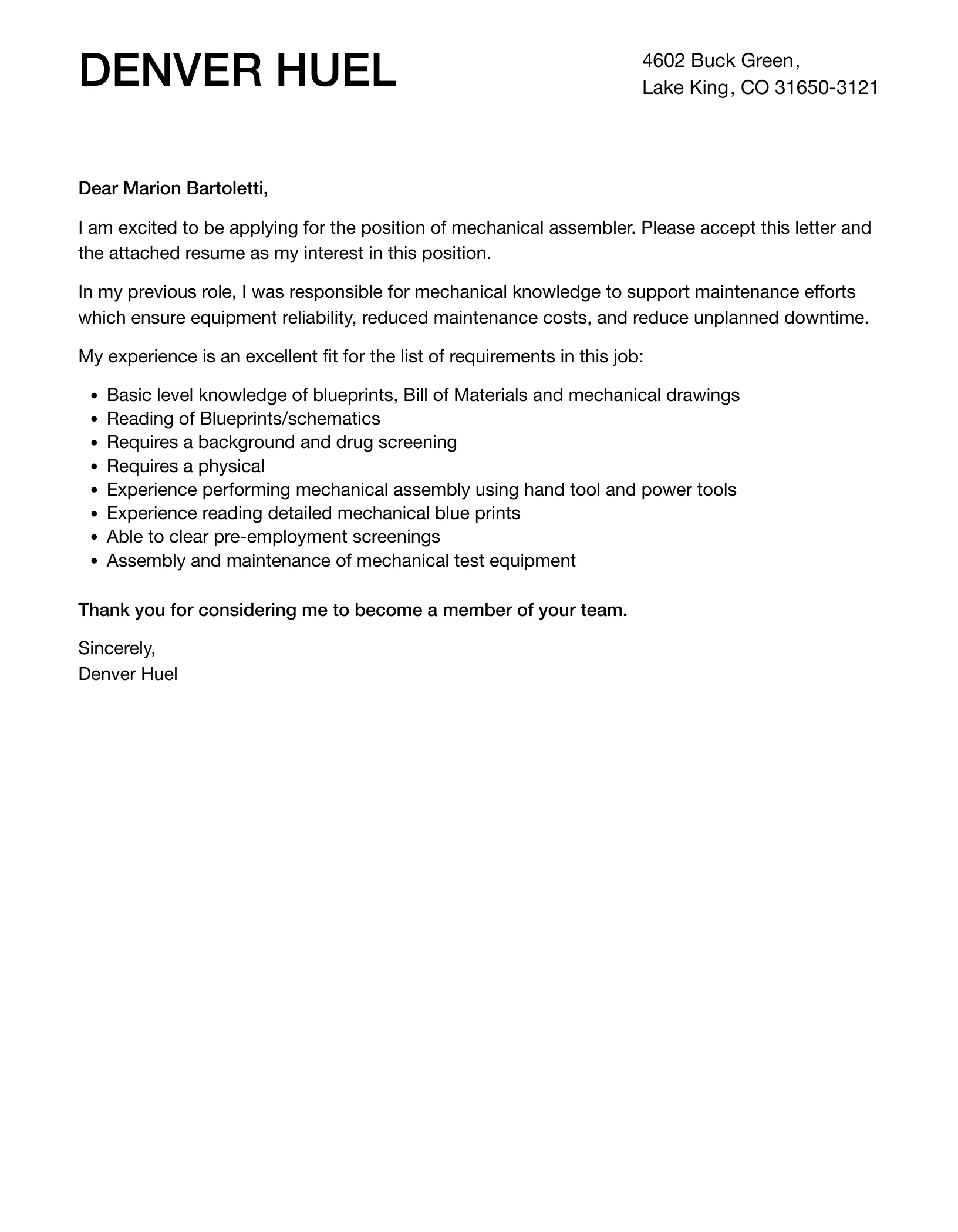Crafting a compelling assembler cover letter is crucial for making a positive first impression and securing your dream job. A well-written cover letter not only introduces you to the hiring manager but also highlights your relevant skills and experience in a way that a resume alone cannot. It’s your chance to demonstrate your understanding of the role, express your enthusiasm, and convince the employer that you’re the perfect fit for their team. With these top 5 tips, you’ll be well on your way to creating an outstanding cover letter that gets you noticed. Remember, the goal is to stand out from the crowd and increase your chances of landing an interview.
Highlight Your Assembler Skills
Your cover letter is an opportunity to showcase the specific skills that make you an exceptional assembler. Start by identifying the key skills mentioned in the job description. These might include the ability to read and interpret blueprints, use hand tools and power tools, perform quality control checks, or work with specific materials. Then, weave these skills into your cover letter by providing concrete examples of how you’ve applied them in previous roles. For instance, instead of simply stating that you’re proficient in using hand tools, describe a project where you used a specific tool to assemble a complex component, emphasizing the precision and efficiency you demonstrated. Be specific, providing examples that reflect your mastery of the required skills.
Detail Relevant Experience
While your resume provides a chronological overview of your work history, your cover letter allows you to elaborate on your experience and connect it directly to the job you’re applying for. Focus on the experiences that are most relevant to the target position, highlighting your responsibilities and accomplishments in those roles. If the job description mentions specific types of assemblies or materials, make sure to mention your experience with those in your letter. Briefly describe projects where you’ve demonstrated your expertise, emphasizing any unique challenges you overcame or any improvements you implemented. The aim is to convince the employer that you have the practical experience necessary to excel in the role.
Quantify Your Achievements

Don’t just tell the employer what you did; show them the impact of your work by quantifying your achievements whenever possible. Instead of saying you improved efficiency, state the percentage by which you reduced assembly time. If you consistently met or exceeded quality standards, provide data to back it up, such as the percentage of products that passed inspection or the number of defects you were able to eliminate. Using numbers and metrics adds credibility to your claims and makes your accomplishments more memorable. For instance, if you’ve worked with a team, mention how you contributed to meeting deadlines, reducing costs, or improving customer satisfaction. Quantifiable achievements will set you apart from other applicants.
Showcase Your Problem-Solving Abilities
Assemblers often encounter unexpected challenges, so your cover letter should demonstrate your problem-solving skills. Describe any situations where you had to troubleshoot issues, identify solutions, and implement them effectively. This could involve resolving assembly errors, adapting to changes in design specifications, or finding ways to improve the assembly process. When describing a problem, briefly outline the challenge, the steps you took to address it, and the positive outcome. Emphasize your ability to think critically, adapt to new situations, and work collaboratively to find solutions. Highlighting these abilities demonstrates your resourcefulness and your capacity to contribute positively to the team and the company.
Customize for Each Application
Generic cover letters are easily recognizable and often overlooked. To make a strong impression, tailor your cover letter to each specific job application. Carefully review the job description and identify the key requirements and preferred qualifications. Then, adjust your letter to highlight the skills, experience, and achievements that align with those requirements. Research the company and mention something that resonates with you about their mission, values, or products. This shows that you’ve taken the time to understand the role and the organization, indicating genuine interest. A customized cover letter proves that you’re not just sending out a generic application; you’re specifically interested in the position and what it entails.
By following these top 5 tips, you’ll be well-equipped to write a compelling assembler cover letter that effectively highlights your skills, experience, and achievements. Remember to tailor your letter to each job application, quantify your accomplishments, and showcase your problem-solving abilities. With a well-crafted cover letter, you can significantly increase your chances of landing an interview and ultimately securing the job you want. Good luck!
